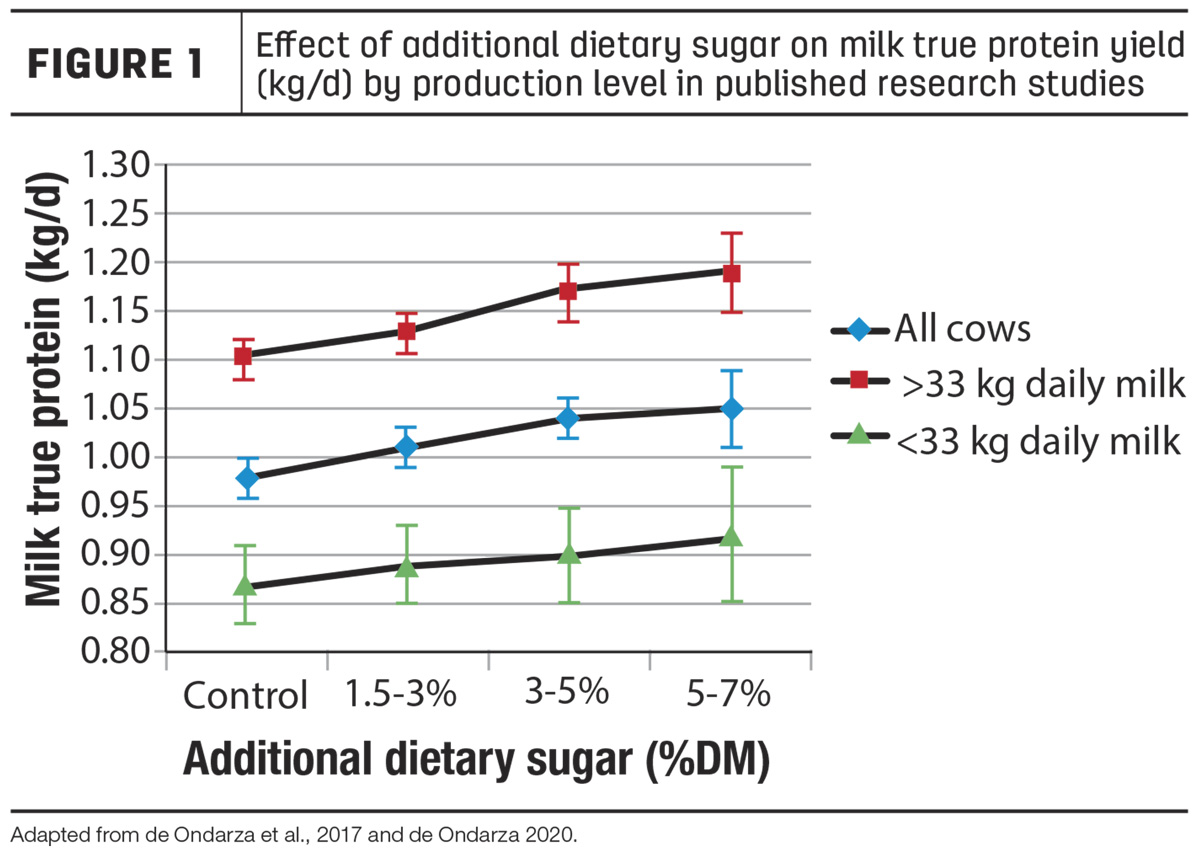With feed costs dramatically on the rise and future trends indicating no signs of decreasing, it is essential to efficiently feed your animals. One effective way to reduce feed costs in the dairy industry is to manage protein utilization and subsequently lower milk urea nitrogen (MUN).
When cows digest protein from their diets, that protein is broken down in the rumen into peptides, amino acids and eventually ammonia. Rumen microbes capture that ammonia and convert it into microbial protein, making rumen microbes a major source of protein in a cow’s diet. These microbes are continuously flushed from the rumen and digested by the cow, contributing to the overall milk protein yield. However, if dietary energy becomes limited, or dietary protein exceeds daily requirements, the microbes can become less efficient at utilizing this ammonia, resulting in the ammonia being lost across the rumen wall into the bloodstream, reducing microbial protein yields and protein feed efficiency.
High concentrations of ammonia in the bloodstream can be toxic to the animal and, as such, the liver will convert ammonia into urea and excrete it from the body through urine or milk. Urea levels in milk will differ by herd, with average ranges typically being 10 to 14 milligrams per decilitre for Holsteins. Anything higher or lower than these averages warrant further investigation and potential nutritional intervention.
Additionally, high amounts of urea in urine can have negative repercussions on the environment. For example, high nitrogen excretion can increase nitrous oxide emissions and acidify neighbouring bodies of water. Therefore, measuring MUN is an effective way to monitor protein utilization and efficiency within your herd, while being mindful of potential harmful environmental impacts.
One potential strategy to optimize MUN values and improve microbial protein yield is through supplementation of higher-energy feeds, such as dietary sugar and/or molasses liquid feeds. Recent research from the College of Veterinary Medicine in Nanjing, China, has shown that increasing dietary energy levels will significantly increase microbial protein yields, even compared to feeding high-protein diets.
Supplementing additional energy through sugar (as opposed to increasing dietary starch), is proven to quickly improve microbial growth without increasing the risk of ruminal acidosis typically associated with supplementing high-starch feeds. This research is supported by a recent wide literature review and analysis of the impact of supplementing high-energy dietary sugars on optimizing rumen function. This research found that the addition of dietary sugar improved the rumen microbe’s ability to capture and utilize ammonia and increased microbial protein synthesis. Figure 1 demonstrates how increasing dietary sugar increased milk true protein levels (kilograms per day), indicating better protein utilization and synthesis in the rumen with greater responses seen in higher-producing cows.

Furthermore, these findings were supported by research from the University of Guelph in 2012, where it was found that cows supplemented with a molasses-based liquid feed had higher milk protein yields compared to control cows receiving no supplementation. These results further emulate the positive benefits sugar supplementation has on improved protein feed efficiency and microbial protein synthesis. Sugar supplementation has the potential to reduce overall feed costs as it increases the utilization of soluble protein from forages, resulting in a reduction of the quantity of protein concentrates needed to meet dietary targets.
Multiple studies have investigated optimum dietary sugar inclusion rates for lactating dairy cows, with the consensus recommending supplementing sugar at 5% to 8% of the diet to maximize efficiency and production outcomes.
Dairy cows are not the only ruminant species that can benefit from sugar supplementation. This can also be extremely beneficial to goat and sheep farming communities that typically rely on haylage or baleage as forage sources. Supplementing liquid sugar with these forage sources would greatly improve protein utilization, ultimately improving health and reproductive outcomes for these herds.
Overall, supplementing sugar to dairy cows and other ruminants can optimize MUN levels by increasing microbial protein yields in the rumen, ultimately enhancing animal production and performance, while reducing protein feed waste and nitrogen excretion into the environment.
References omitted but are available upon request by sending an email to the editor.
This article was written on behalf of Liquid Feeds Inc.








